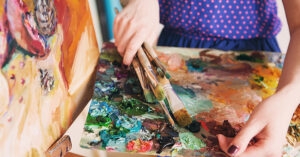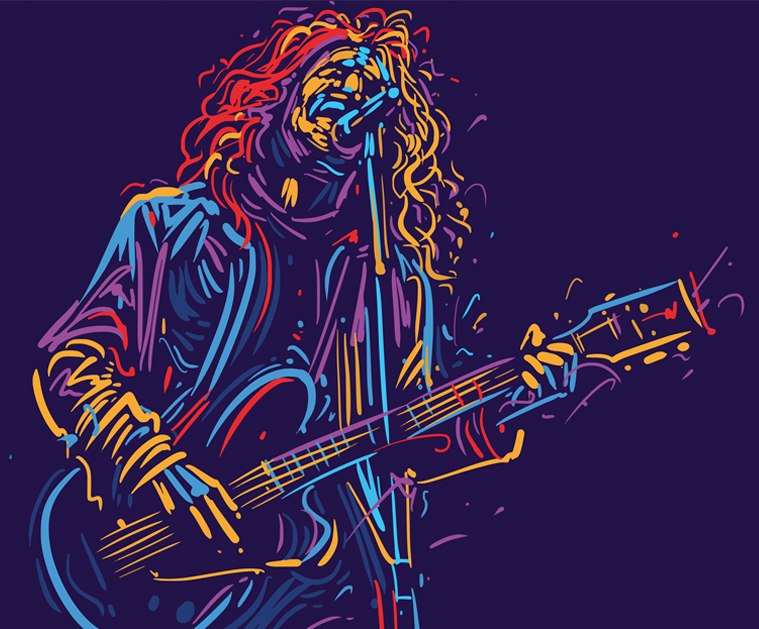Parents want to give their child every opportunity to grow and succeed. But with only so many hours available in a day, it is hard to choose from the wide range of extracurricular activities available. You don’t want to overload your child, but you want them to engage in activities that are fun and teach skills that will help them in school and in adult life.
You can’t go wrong with art as an extracurricular activity. The benefits of art for children extend far beyond the classroom and stay with the child well into adulthood.
Here are five ways art benefits students of all ages.
#1 Builds Fine Motor Skills and Neural Connections
Creating through art teaches fine motor skills, promotes neural development, and improves visual-spatial processing. Each of these improvements can be applied to academic study subjects such as reading, writing, math, and science.
Art establishes the physical and neural network necessary to achieve success in other endeavors.
When children hold a paintbrush, pencil, crayon, or pen and then draw lines, curves, dots and dashes they gain dexterity and coordination. Just the act of mixing colors, cutting something with scissors, or squeezing glue out of a bottle requires coordination. From creating with playdough to tearing strips of paper for paper mâché, these hand motions require coordination with the eyes and increasing levels of strength and manual agility. A young child’s early scribbling increases hand strength so that writing is easier.
Art engages multiple senses. Depending on the activity, children see, hear, touch, and smell. And of course, what small child hasn’t tasted paste or glue? By engaging the senses neural synapses fire away creating more and more neural connections. Increasing the size of the neural network can improve learning performance. Research shows additional connections make it easier to learn a new task. But children don’t see making art as learning, they just think they are having fun.
Creating art requires visual-spatial processing as well. As children grow through their art, their visual-spatial processing improves. With each drawing or painting, objects gain the correct proportions and relationship in size. That’s improved visual-spatial processing in action!
#2 Enhances Creative Abilities and Encourages Imagination
When a child creates art, they experience real-world achievement. Taking an idea from inspiration to a finished product requires logical thinking and problem-solving skills as well. These thinking skills translate to other areas of life where problem-solving is essential.
Art teaches children to think outside the box. Through their art, children learn how to be original, how to discover through manipulating colors and textures, and how to innovate as they create new ways to tackle the same subject. Children engaged in art in elementary and middle school become better thinkers and once they enter the workforce, they become innovators in their field.
Almost everyone knows Leonardo da Vinci was an artist and inventor. But what about Samuel Morse? The founder of the Morse code and pioneer in the field of electromagnetics was also an accomplished painter.
John Audubon is known as much for his scientific work as he is for his art. But those are people from the past, what about current-day creatives?
Barbara Corcoran, Queen of New York real estate, says creativity is vital to success in business. In one interview she shared, “I was labeled the dumb kid in school because I couldn’t read or write. But from a young age, my mom made sure I knew my biggest strength was my imagination. My imagination took me further than book smarts ever could. I learned to use my creativity in business, and it was the secret sauce to my success.”
#3 Improves Communication
They say a picture is worth a thousand words for a reason. By making art, children learn to speak without words and to express emotions and feelings without tears of joy or outbursts of anger.
Through art, a child learns to express feelings and memories using more than just words. For children that are coping with trauma, the loss of a parent or caregiver, divorce, or other distress, making art can be an avenue for release and create a sense of relief.
During the turbulent teen years, art allows young adults to express the jumble of feelings and emotions they may keep locked up inside. For many teens, art becomes a cathartic experience that provides an avenue of relief.
All children benefit from reducing big feelings and ideas to a more manageable size. By manipulating movement, size, and color children gain a sense of control.
By boosting their ability to communicate without words, children find a voice they didn’t know they had. Oral and written communication skills can improve as a result.
#4 Boosts Self-Esteem
When they see the results of their own work, children are self-validated. Their boost in self-esteem comes not from the words of others but from their own sense of accomplishment.
Where math, science, and grammar classes are filled with right and wrong answers, with art there is no good and bad. Incorrectly solving a mathematical problem can be frustrating and upsetting. Until you memorize the formula, you fail again and again. But trying a new art medium or style doesn’t result in success or failure. That’s because exploration is just as important as the finished product.
Children enjoy a gain of authentic self-esteem through their art exploration. They are less focused on their own lack of confidence and more focused on what they know they can achieve through their efforts. This creates a positive feedback loop that improves self-esteem as they stretch and try new things.
#5 Builds Connection and Community
Art immediately creates a common ground for children who may feel socially uncomfortable or awkward around their peers. Making art side-by-side builds an instant community. Children learn to support the efforts of others, have empathy for the feelings of others, and most importantly how to have a good time in a group setting like at the East End Arts Mosaic Festival.
Confidence replaces feelings of insecurity and anxiety as art brings children of all races and backgrounds together for a common purpose.
Long Island Art Lessons for Children
The East End Arts & Music School offers group and individual lessons in a variety of mediums. Programs are available all year and scholarships are provided for those who qualify.
Click here to explore art classes at the East End Arts & Music School.






